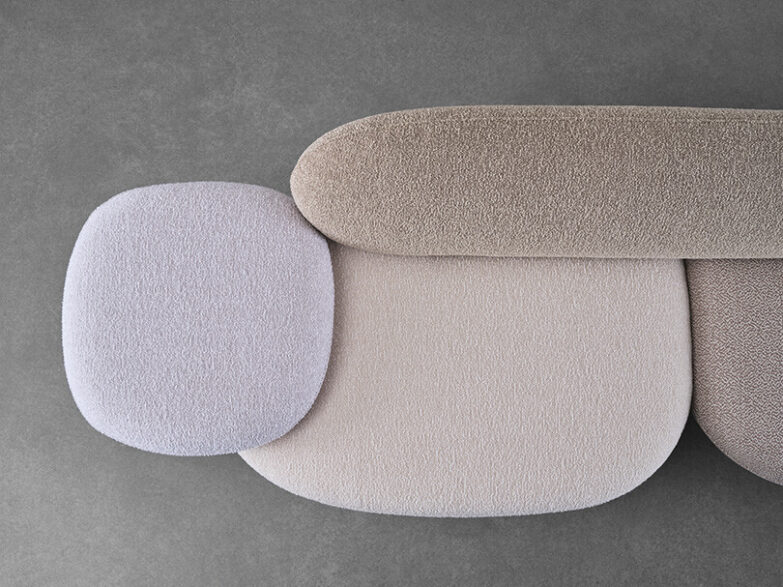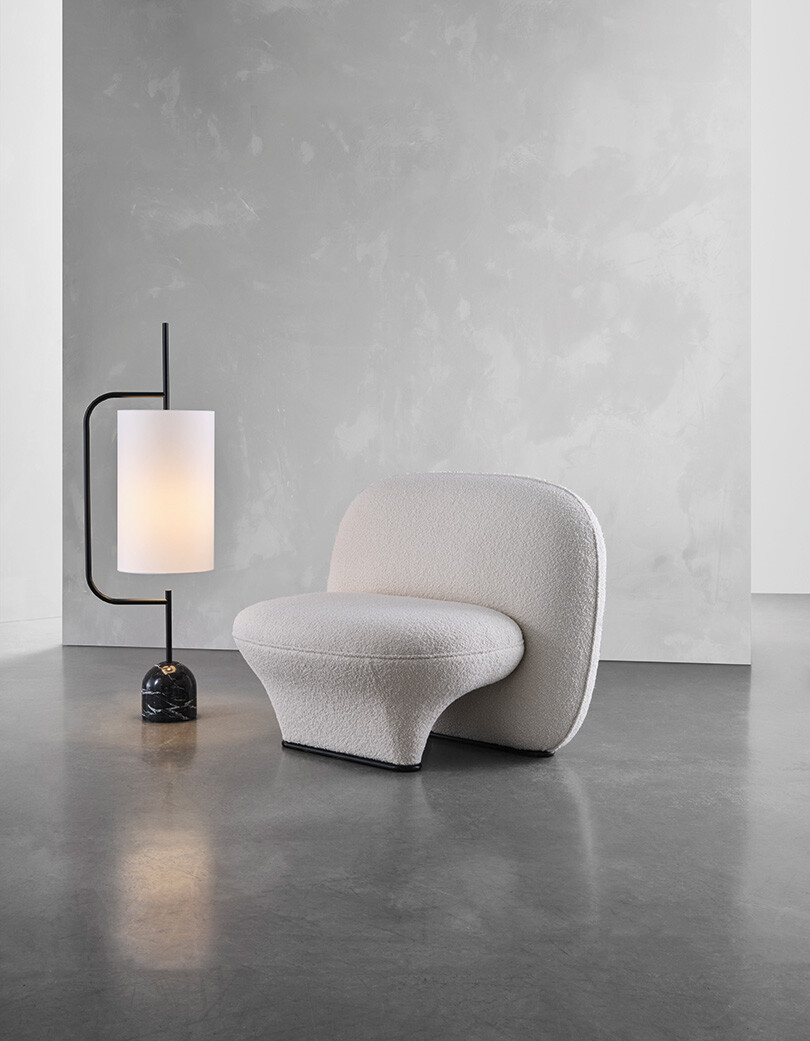Aleesha Callahan: You’re often brought on for creative direction. What do you define as your title?
Luca Nichetto: I’m a designer. To be an art director is just another project but on a different scale. Maybe it’s not a product, but still a project. Everything is a project I like to do, so it is not that I want to be defined on a specific. I prefer to be more generalistic in my approach rather than be so specific.
Is it better to be a generalist or a specialist? What’s your opinion on that?
100 per cent generalist because as a generalist, you get to be a director of an orchestra, mostly. So a director of an orchestra doesn’t know how to play all the instruments right? But he knows how to make each instrument create the best concert ever.
There is a naivety that allows you to try different things. If you are so specialist, in the end, you will be a prisoner of yourself because the experience you have will create a wall around what people think you can do and it is very complicated to get outside of it.
I also feel like if you’re too specialist, you can become obsolete.
I agree, we can be also very boring, then the risk is that you start to repeat yourself.
For me, I’m always jumping from one field to another field, or a bigger project, smaller project, start up, established brand. I recently designed a piano for Steinway.
“If you are so specialist, in the end, you will be a prisoner of yourself because the experience you have will create a wall around what people think you can do.”
Luca Nichetto
Did you ever think in your life you’d design a piano?
No, no, no. I never, never thought about it. But when it happened, I was like ok, why not? And if I was not a generalist, you know, it probably wouldn’t have happened.
I guess you have to be a good collaborator, good at saying what you don’t know, so you can bring in the experts.
Yes! You also need to be able to listen properly to what the people with more experience in the field tell you. And try to understand if what they are telling you is because it’s true, or because it’s too much effort to do something different.
There is a very psychological part to it and if you feel that it’s more of a mindset that they don’t want to move forward, then you need to push it.
So tell me about the new stuff, this beautiful Figure sofa…
When I started as the art director for Wittmann, I looked for what was, in my opinion, missing from the collection. One thing that was very important was that there was no statement sofa that could work for both residential and contract.
So, I looked at the history of the brand and I found that Joseph Hoffman [proponent in the Viennese Secession; Wittmann has sole authorisation for his original designs] made jewellery where he was working with different gems and stones. When I saw this, I thought that it could be fantastic to play with this idea of Hoffman’s passion for stone.
I then created the 3D shape of the sofa, and because I didn’t want it to feel like a heavy piece, I created this sort of tulip shape. And then we started to play some more with shape and proportion, then explored the idea of overlapping and long lines.
Yeah, it is a statement and very eye-catching. In terms of engineering, it comes down to these small heels, how do you get stability?
The feet of the sofa look soft and delicate but the inner structure is incredible because there are layers of wood panelling that create the skeleton, which is then covered with felt and upholstery.
Did you work closely with the team at Wittmann to develop Figure?
100 per cent, there was a lot of trial and error to achieve the results. It was a very long trip to achieve what we wanted.

How long did it take from concept to production?
More or less one year. It’s beautiful to see how much you can push the feeling of craftsmanship. I think Wittmann has tremendous potential in that sense. So it was also a trial to see if we can jump outside of our comfort zone to do something different without using a mould.
So you took those traditional methods and approached them with a really contemporary form that they’ve never done before. Like old and new really coming together?
It is and I’m very pleased. I mean, it was also a nice surprise because you never know when you are pushing so much if it will actually work. And it’s not bad to fail. I think failing is just where you are learning what to do next.
“You need to be able to listen properly to what the people with more experience in the field tell you. And try to understand if what they are telling you is because it’s true, or because it’s too much effort to do something different.”
Luca Nichetto
You took over as art director two years ago, are you still working in that kind of creative capacity with Wittmann?
Last year at Salone we showed the first result of all the work. It was more of a product statement, whereas this year, 95 per cent of all the products you see on the stand are under our direction. So it’s the first time that you can really see the result of that planning and strategy.
I did a plan until 2025, so there is a long road map and lots of questions to answer like – what products to do? Which designers to work with?
The company is now much more independent, the biggest part of my job is more or less done. Now we’ll introduce new typologies like, lamps, rugs, textiles. It’s interesting to see how it’s evolving.
Seeing it come to life.
Yes. And just to see how the products start to integrate and can work together, I’m very happy in that sense.

How did you go from a strategic mindset, from big picture thinking to the details?
Well first of all Wittmann was always trying to split the product between contract and residential. I said let’s put everything together. Previously it was always about having one designer that made one big collection.
I say this is good, but will not be good for you as a brand. It’s better to have designers that are working on a specific product to really achieve the plurality of language that makes the brand more interesting.
Also the main goal for Wittmann was to internationalise the brand so as not to be only focused in the German market, but to grow abroad. So to do that, it was also very important to have designers that are coming from other countries. For example, we have now worked with Nendo and Neri&Hu, and opened up to a different kind of typology.
You need to have a way to make what you do unique, and build up also a team of graphic designers, stylists, photographers – so really trying to push the idea of brand rather than the idea of designer.
Wittmann is available in Australia through Domo.
Luca Nichetto
nichettostudio.com
Wittmann
wittmann.at/en

